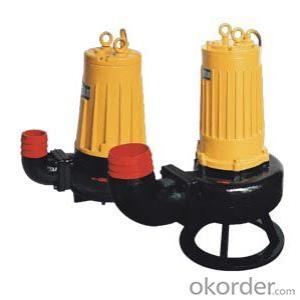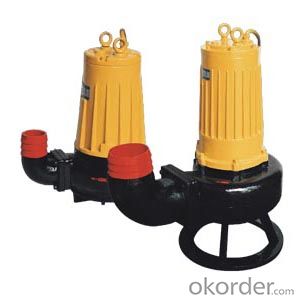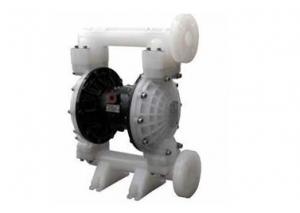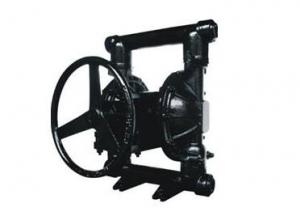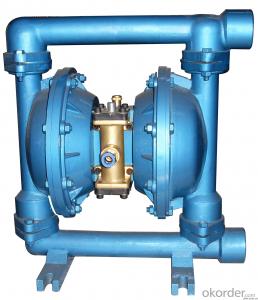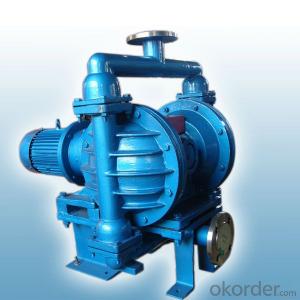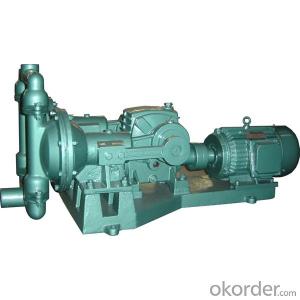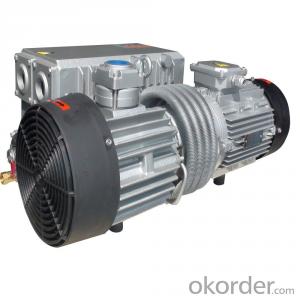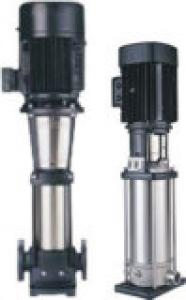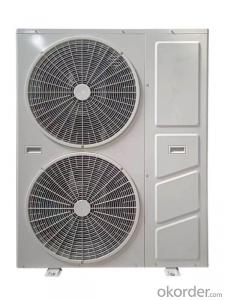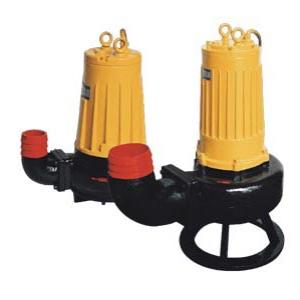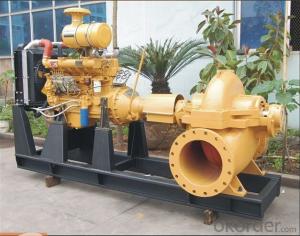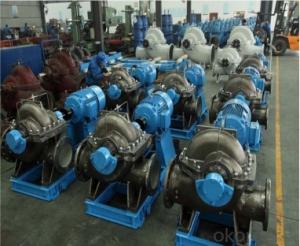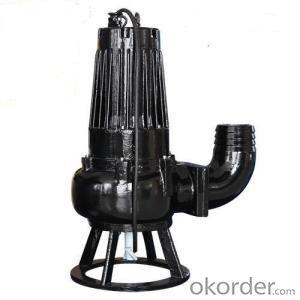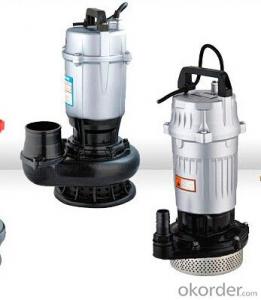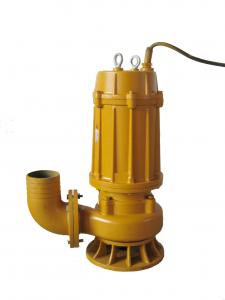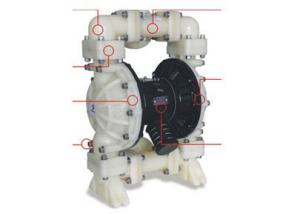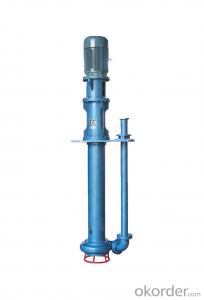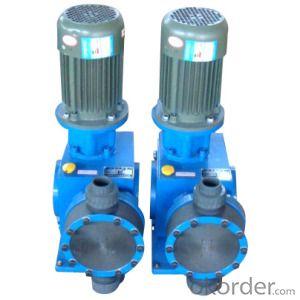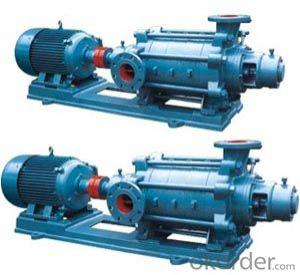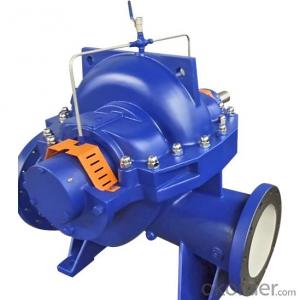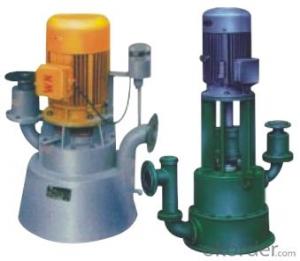Splitting Sewage Pump for Hard Solid and Fiber
- Loading Port:
- China Main Port
- Payment Terms:
- TT OR LC
- Min Order Qty:
- -
- Supply Capability:
- -
OKorder Service Pledge
OKorder Financial Service
You Might Also Like
Performance & Advantages
High blowdown capacity Non-blockageTearing mechanism can tear, cut off and discharge the fibrous materials. Compact structure, easy for moving with no need for setting up a pump room.
Range of Application
Applicable for chemical, petroleum, pharmacy, mining, papermaking, power plant, urban sewage treatment, municipal engineering and public facilities to handle sewage and feculence containing particles.
Technology Parameters
Flow: 5-200m3/h
Head: 4-30m
Rotary Speed: 1450-2900r/min
Calibre: Φ80-Φ150
Temperature: -15~+60º C
Working Pressure: ≤ 1.0Mpa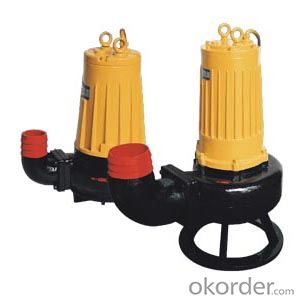
- Q: Can an air pump be used for inflatable film sets?
- Yes, an air pump can be used for inflatable film sets. Air pumps can provide the necessary air pressure to inflate and maintain the shape of the inflatable film sets, making them an essential tool for their setup and use.
- Q: How does an air pump handle different tire sizes?
- The purpose of an air pump is to accommodate various tire sizes by incorporating a universal nozzle attachment capable of fitting onto different valve types found on different tires. The most commonly encountered valve types are the Schrader valve and the Presta valve. By means of the universal nozzle attachment, the air pump can establish a secure connection with the valve and form a hermetic seal, regardless of the tire size. When utilizing an air pump, it is crucial to select the appropriate nozzle attachment that corresponds to the specific valve type on your tire. The Schrader valve is frequently encountered on car, motorcycle, and most bicycle tires, whereas the Presta valve is typically found on high-performance bicycles. The nozzle attachment must fit snugly onto the valve to prevent any air leakage during the inflation process. Additionally, air pumps are equipped with a pressure gauge that enables you to monitor and adjust the air pressure accordingly. Different tire sizes necessitate different air pressure levels, which can be determined by consulting the manufacturer's specifications or the recommended pressure range imprinted on the tire sidewall. The pressure gauge assists in ensuring that you inflate the tire to the correct pressure, irrespective of the tire size. Overall, an air pump caters to various tire sizes by providing a universal nozzle attachment that fits onto different valve types, as well as a pressure gauge to guarantee precise inflation. With these features at your disposal, you can confidently inflate tires of different sizes, thereby maintaining optimal air pressure for safe and efficient performance.
- Q: How does an air pump handle variations in air density during inflation?
- An air pump is designed to handle variations in air density during inflation through its ability to adjust the pressure being applied. Air density can vary due to factors such as temperature, altitude, and humidity. When an air pump is used to inflate an object, it typically has a gauge or pressure control mechanism that allows the user to monitor and adjust the pressure being delivered. When the air density is higher, such as in colder temperatures or at lower altitudes, the air pump will deliver a higher pressure to ensure proper inflation. This is because the higher air density requires more air molecules to fill the same volume, and thus a higher pressure is needed to achieve the desired inflation level. Conversely, when the air density is lower, such as in warmer temperatures or at higher altitudes, the air pump will deliver a lower pressure to prevent over-inflation. This is because the lower air density requires fewer air molecules to fill the same volume, and thus a lower pressure is sufficient to achieve the desired inflation level. Furthermore, some air pumps may have built-in sensors or automatic pressure regulation systems that can detect and adjust the pressure based on the current air density. These systems ensure that the inflation process remains consistent and accurate regardless of the variations in air density. In summary, an air pump handles variations in air density during inflation by allowing the user to adjust the pressure being delivered and, in some cases, by automatically regulating the pressure based on the current air density. This ensures that the object being inflated is properly inflated regardless of the temperature, altitude, or humidity conditions.
- Q: How does an air pump affect dissolved oxygen levels in water?
- An air pump can have a positive impact on the dissolved oxygen levels in water. When an air pump is used, it creates agitation and movement in the water, which promotes the exchange of gases between the water and the atmosphere. This process allows for the absorption of oxygen from the air into the water and the release of carbon dioxide and other gases from the water into the atmosphere. By increasing the amount of oxygen in the water, an air pump helps to maintain a healthy and oxygen-rich environment for aquatic organisms such as fish, plants, and other microorganisms. Oxygen is crucial for their respiration process and overall survival. Furthermore, an air pump can also prevent the formation of stagnant areas in the water, which tend to have lower oxygen levels. Stagnant water can become depleted of oxygen over time due to the lack of movement and the decomposition of organic matter. By introducing air bubbles and creating water movement, an air pump helps to prevent the formation of stagnant areas and distribute oxygen evenly throughout the water body. In summary, an air pump contributes to the increase of dissolved oxygen levels in water by promoting gas exchange between the water and the atmosphere, providing a vital resource for the survival of aquatic organisms and preventing the formation of stagnant areas with low oxygen levels.
- Q: How does an air pump handle dust and debris?
- An air pump typically handles dust and debris by utilizing filters, such as air intake filters and dust collection filters, which trap and remove particles from the air before it is pumped out. These filters prevent dust and debris from entering or circulating within the pump, ensuring its efficient and clean operation.
- Q: Can an air pump be used for inflating air mattresses with built-in USB ports?
- Absolutely! It is indeed possible to utilize an air pump to inflate air mattresses that come with incorporated USB ports. These USB ports serve the purpose of energizing electronic devices, and they have no impact whatsoever on the inflation process of the air mattress. To inflate the mattress, simply connect the air pump to a power source, and insert the nozzle into the valve of the air mattress. Once inflated, rest assured that the USB ports on the air mattress will continue to function normally.
- Q: Can an air pump be used for inflating air pillows for airplanes?
- Yes, an air pump can be used for inflating air pillows for airplanes.
- Q: How to prevent clogging of the air outlet of an air pump?
- To prevent clogging of the air outlet of an air pump, it is important to regularly maintain and clean the pump. This can be done by checking and cleaning the air filter regularly, as a clogged filter can restrict airflow. Additionally, ensuring that the pump is located in a clean and dust-free environment can help prevent debris from entering the air outlet. Regularly inspecting the air outlet and removing any accumulated dirt or debris can also help maintain proper airflow and prevent clogging.
- Q: How to choose the right air pump for a specific air suspension kit?
- When choosing the right air pump for a specific air suspension kit, there are several factors to consider to ensure compatibility and optimal performance. Here are some steps to guide you in making the right choice: 1. Identify the air suspension kit requirements: Start by understanding the specific requirements of your air suspension kit. Check the manufacturer's instructions or the product specifications to determine the recommended air pressure range, load capacity, and other technical specifications. 2. Determine the required airflow and duty cycle: Consider the amount of airflow required to inflate and maintain the desired air pressure in your air suspension system. This will depend on the weight of your vehicle and the desired ride height. Additionally, you should consider the duty cycle, which refers to the pump's ability to run continuously without overheating. Determine how often and for how long the pump will need to operate to meet your needs. 3. Assess power source options: Air pumps can be powered by various sources, including 12-volt batteries, the vehicle's electrical system, or an external power source. Consider the power source options available to you and choose one that is most convenient and compatible with your air suspension kit. 4. Look for compatibility: Ensure that the air pump you choose is compatible with the air suspension kit you have. Check for any specific compatibility requirements or recommendations provided by both the air pump and air suspension kit manufacturers. It's important to choose a pump that is designed to work seamlessly with your specific kit. 5. Consider noise levels: Air pumps can produce varying levels of noise while operating. If noise is a concern for you, look for pumps that are specifically designed to operate quietly. Check user reviews and product specifications to get an idea of the noise levels associated with different air pump models. 6. Research and compare different air pump options: Take the time to research and compare different air pump models available in the market. Look for reputable brands known for producing high-quality air pumps. Read customer reviews to get insights into the performance, reliability, and durability of different models. 7. Consult with professionals: If you're unsure about the best air pump for your air suspension kit, consider consulting with professionals who specialize in air suspension systems. They can provide valuable advice based on their expertise and experience. By carefully considering these factors and doing thorough research, you can select the right air pump for your specific air suspension kit, ensuring optimal performance and a comfortable ride.
Send your message to us
Splitting Sewage Pump for Hard Solid and Fiber
- Loading Port:
- China Main Port
- Payment Terms:
- TT OR LC
- Min Order Qty:
- -
- Supply Capability:
- -
OKorder Service Pledge
OKorder Financial Service
Similar products
Hot products
Hot Searches
